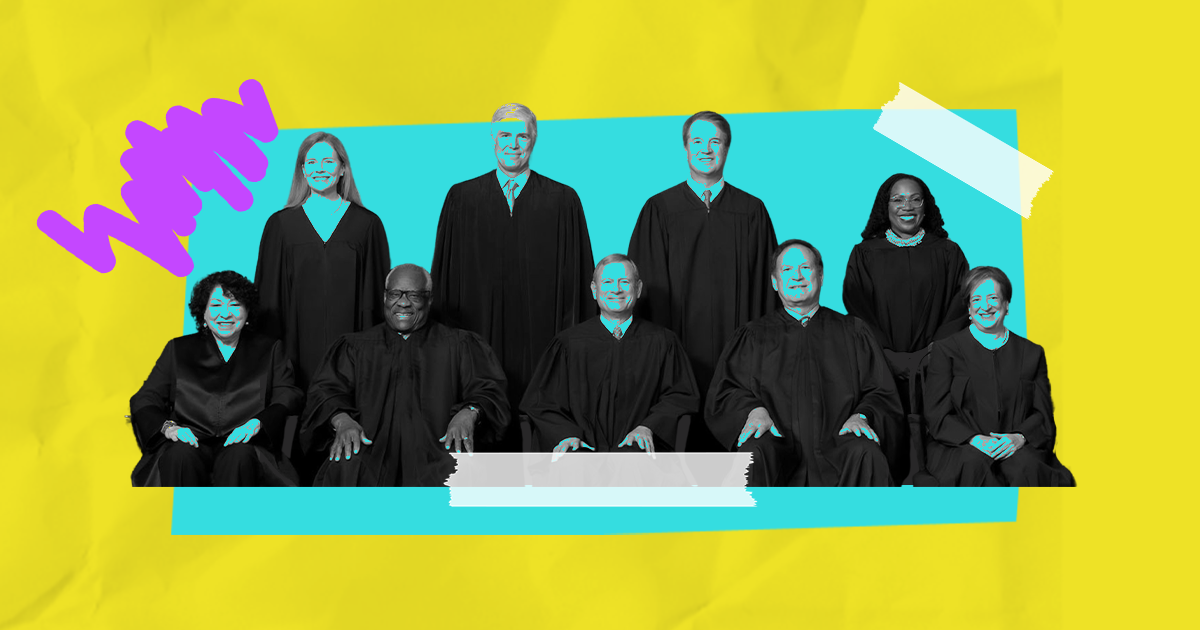Supreme Court Term Limits Explained

The United States has a Supreme Court problem.
Thanks to politicians like Mitch McConnell and Donald Trump, the current Court is the most conservative in nearly a century. The Court’s right-wing majority has aligned itself with partisan extremists and shown the American people they will do whatever it takes to hand out wins based on the far right’s agenda. We’ve witnessed the Court reverse 50 years of precedent by overturning Roe v. Wade, gut voting rights, open the floodgates to unlimited corporate money in our elections, and side with their wealthy benefactors instead of the American people in decision after decision.
The Supreme Court is supposed to act as a neutral arbiter of the law—a body that interprets laws, not makes them. As Americans’ faith in the Court reaches all time lows, the question remains: What can we do about our Supreme Court problem?
One answer is term limits.
Right now, justices serve for life. That means unpredictable term lengths, sporadic openings on the bench, and highly politicized appointment processes. Introducing term limits would create a regular appointment schedule under each president, depoliticizing the process and aligning justices with the values of the American people as expressed through Presidential elections.
Term limits for judges is not a new concept. 49 out of 50 states have either term limits, elections, or mandatory retirement ages for their top judges. Beyond that, every major democracy in the world has term limits for their highest courts.
There is currently legislation in Congress that would create term limits for justices and get our Supreme Court on the right path. Here’s what you need to know about it:
THE LEGISLATION
In the House, Representative Hank Johnson (D-GA) has introduced the Supreme Court Tenure Establishment and Retirement Modernization (TERM) Act (H.R.5566). The Senate is considering the Supreme Court Biennial Appointments and Term Limits (BATL) Act (S.3096), introduced by Senator Sheldon Whitehouse (D-RI).
Both bills would create 18-year terms for all current and future Supreme Court justices. Every two years, the longest serving justice would be term-limited off the Court, starting with Clarence Thomas, followed by Chief Justice John Roberts and Justice Samuel Alito. The President would then have the opportunity to appoint a new justice to replace them, with each president appointing two new justices during each four-year presidential term. Over time, the Court would better represent the will of the people.
Specifically, the bills would:
- Establish terms of 18 years in regular active service for Supreme Court justices;
- Establish regular nominations of Supreme Court justices in the first and third years following a presidential election;
- Require current justices to take senior status in order of seniority as new justices are appointed;
- Preserve life tenure by ensuring that senior justices retired from regular active service continue to hold the office of Supreme Court justice, including some official duties and compensation; and
- Require a randomly-selected senior status Supreme Court justice to fill in on the Court if the number of justices in regular active service falls below nine.
HOW TO MAKE IT HAPPEN
Implementing term limits for Supreme Court justices would help reform and rebalance a hyper-partisan Court that is out of touch with the views and values of the American people. 7 out of 10 Americans already support term limits for the Supreme Court, but this reform can only become a reality if Congress hears from you.